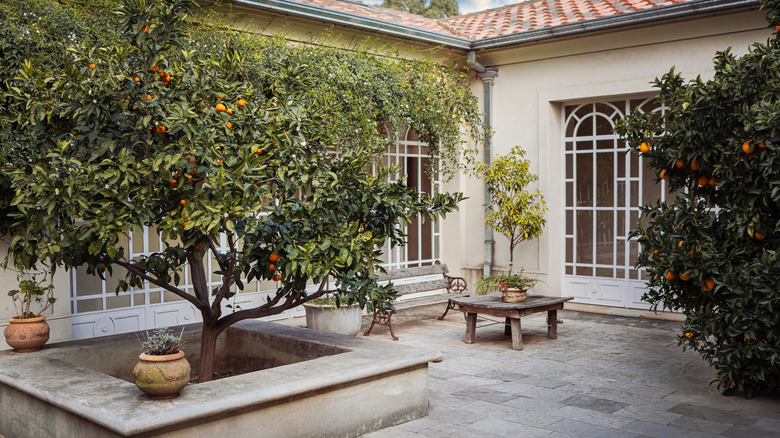This Old-Fashioned Method Of Deterring Fruit Tree Pests Is Still Worth Trying, Here's Why
It's common for gardening practices to be handed down from one generation to the next and many tried and true methods have been used by savvy gardening folks for centuries, even if there's little scientific evidence to back them up. Such is often the case with companion planting. It's an approach a lot of gardeners swear by, even though you won't find much actual research that unequivocally proves it works. At the end of the day, there's no harm in trying because you'll end up growing a wide variety of plants that will enrich your landscape and the environment. One old-fashioned method for deterring fruit tree pests that's still worth trying is to grow masses of bright and cheery marigolds under your trees.
This much-loved garden favorite has long been used as a companion plant around vegetable and fruit crops, based on the belief that the flowers' pungent aroma will deter pests. In a study conducted by researchers at Newcastle University, it was found that one of the volatile compounds given off by French marigolds, in particular, is limonene, the same substance present in citrus peels. The researchers used the compound in a glasshouse experiment which resulted in effectively deterring whiteflies and it was concluded that the pests were repulsed by the compound — a good reason to plant marigolds near your tomatoes and watch them thrive.
Why you should consider growing marigolds around your fruit trees
While science has yet to conclusively prove that marigolds deter pests, there's really no harm in growing them around your fruit trees. First of all, they look pretty and can be used to cover the soil under your trees to keep weeds at bay. Their colorful blooms also attract pollinators such as bees, which are essential if you're growing fruits and want a decent harvest. Using flowers to lure bees to your garden is good practice overall and something that should be encouraged. In fact, marigolds are just one of numerous flowers that attract pollinators and are easily grown from seed. You could also plant nasturtiums, which can help keep aphids off your crop.
Marigolds are also said to attract beneficial insects like ladybugs, hoverflies, and parasitic wasps. These little garden helpers are very useful to have around because their larvae feast on a variety of common fruit tree pests such as aphids, mites, whiteflies, caterpillars, thrips, and scale. There's also scientific proof that marigolds can help to get rid of nematodes because their roots release a compound known as alpha-terthienyl which stops nematode eggs from hatching. However, this might take a year or so to actually become effective. Finally, rabbits and deer find the odor of marigolds similarly off-putting, so planting these blooms around your trees might keep them safe from browsing animals, adding to the many benefits of planting marigolds in your garden.

